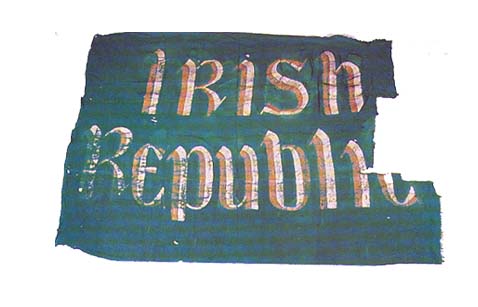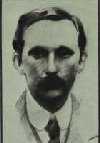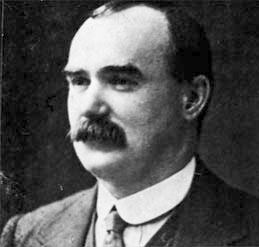Soon after 12 noon on Monday 24th of April 1916, Patrick Pearse stood on the steps of the G.P.O. in Dublin and read the Proclamation of the Irish Republic, declaring Ireland an independent sovereign state.
The rising was doomed from the start, Sir Roger Casement had tried to recruit troops from Germany but failed, he did however manage to get arms, unfortunately the British intelligence knew about the shipment, and captured him and the arms on his return on the shores of Co. Kerry. Eoin MacNeil, chief of staff of the Irish Volunteers didn't even know about the rising till a week before hand, he wanted it to be cancelled, but when he heard Casement was coming with arms he decided to go along with it. However when Casement had been caught he sent messages throughout the country that the rising was off, and that none of the volunteers should make any moves. The other main leaders held a meeting to discuss their next action, the meeting was held in Liberty hall and lasted into the early hours of Easter Sunday, it was decided that the rising would go ahead, only one day later on Easter Monday.
The troops gathered at liberty hall, with no more than 1500 volunteers due to MacNeil's countermanding orders. They then marched of to different locations across the city, Pearse and Connolly were the commanders at the HQ, the G.P.O, Thomas MacDonagh was the leader in Jacob's Factory, Eamon Ceannt was the leader in South Dublin Union, Michael Mallin and Constance Markievicz commanded ST. Stephen's green, Sean Heuston was the leader at Mendicity Institution, other areas taken over included the four courts and Bolands mill(De Valera was commander). The proclamation was read by Pearse with Connolly by his side shortly after noon, the union flag of the United Kingdom was taken down from the G.P.O, and two flags were put in its place, one was the tricolour-green, white, and orange, the other had a green background with orange lettering, spelling out "IRISH REPUBLIC."
Not much fighting occurred on the Monday, mainly because the Britsh weren't sure if the rising was going ahead, and because it was a bank holiday, most of the soldiers in the British army had went to the horse racing. By Wednesday however the Rebels were outnumbered 20 to 1, the gunboat the Helga arrived and sailed up the Liffey, first of all destroying Liberty hall. The Britsh began using artillery, and began shelling the rebel strongholds. Meanwhile De Valera's men achieved minor success, by ambusing and causing heavy casualties to Britsh re-inforcements marching in from Kingstown. On Thursday an attack was made on Bolands mill, and the men in South Dublin Union began to lose ground, the British also began shelling the G.P.O, which was by now on fire.
By Friday the G.P.O, was ready to collapse. Connolly led squads of men and women out of the building, and got injured in doing so, his foot was shattered. Pearse and the few remaining rebels left in the G.P.O, escaped carrying Connolly on a stretcher.
The leaders got together as quick as possible, and held a meeting in a shop not far from the G.P.O, it was decided there that "for there fellow citizenery of Dublin, and remaining comrades" that they should surrender. A message was sent to the British Chief Commander, Sir Robert Maxwell, he sent word back that they would accept nothing less but "uncondational surrender", Pearse and the others accepted.
On Sunday the rebels were arrested and marched through Dublin to Kilmainham jail. Court martials were carried out and 90 were sentenced to death, over 70 of these were later commuted to life sentences.
Read more on those who died and those who were executed, and the aftermath here>>
|










